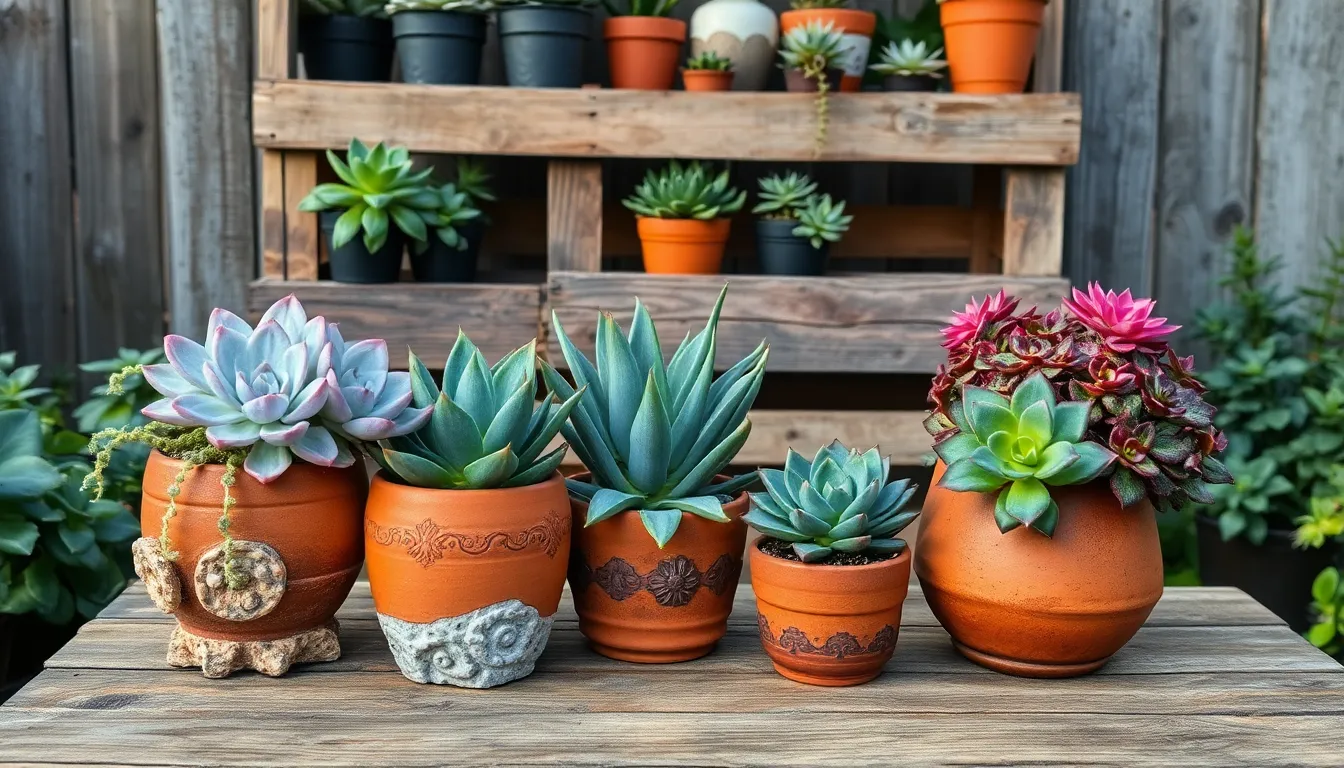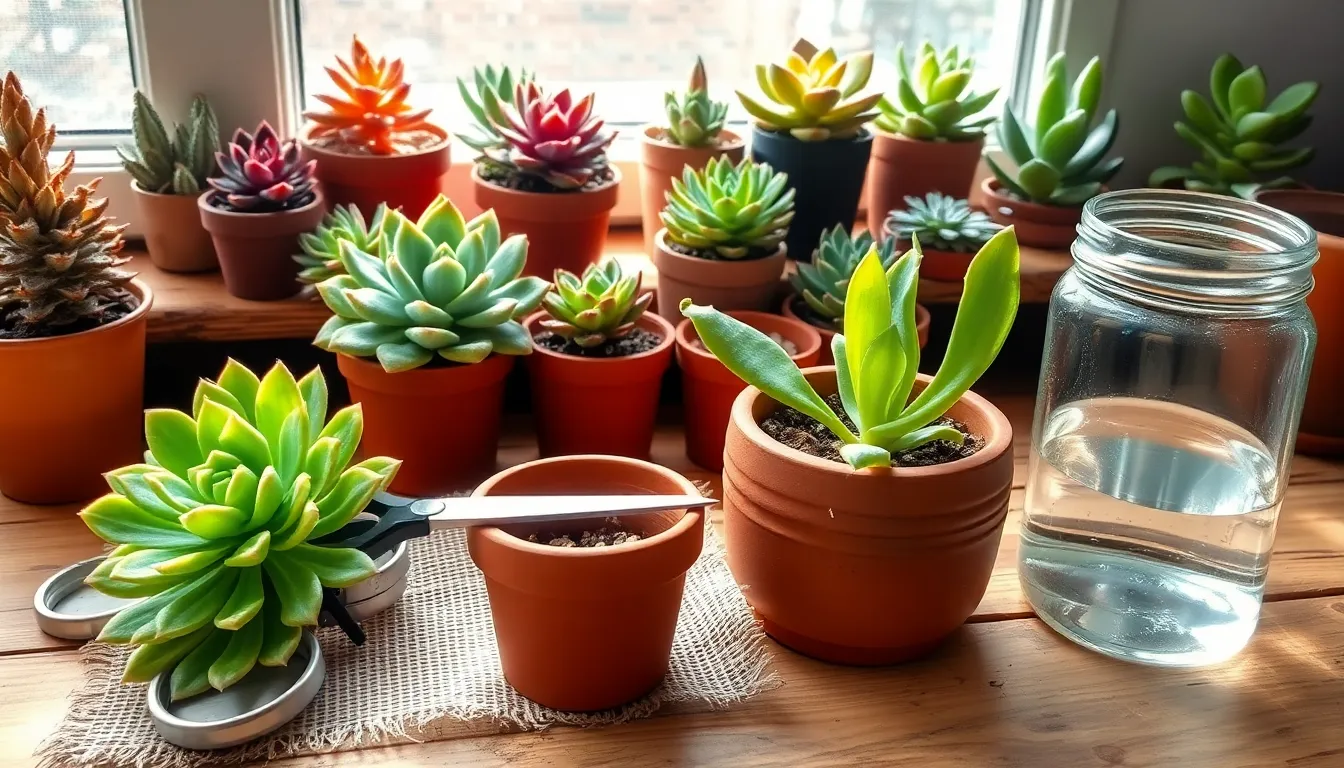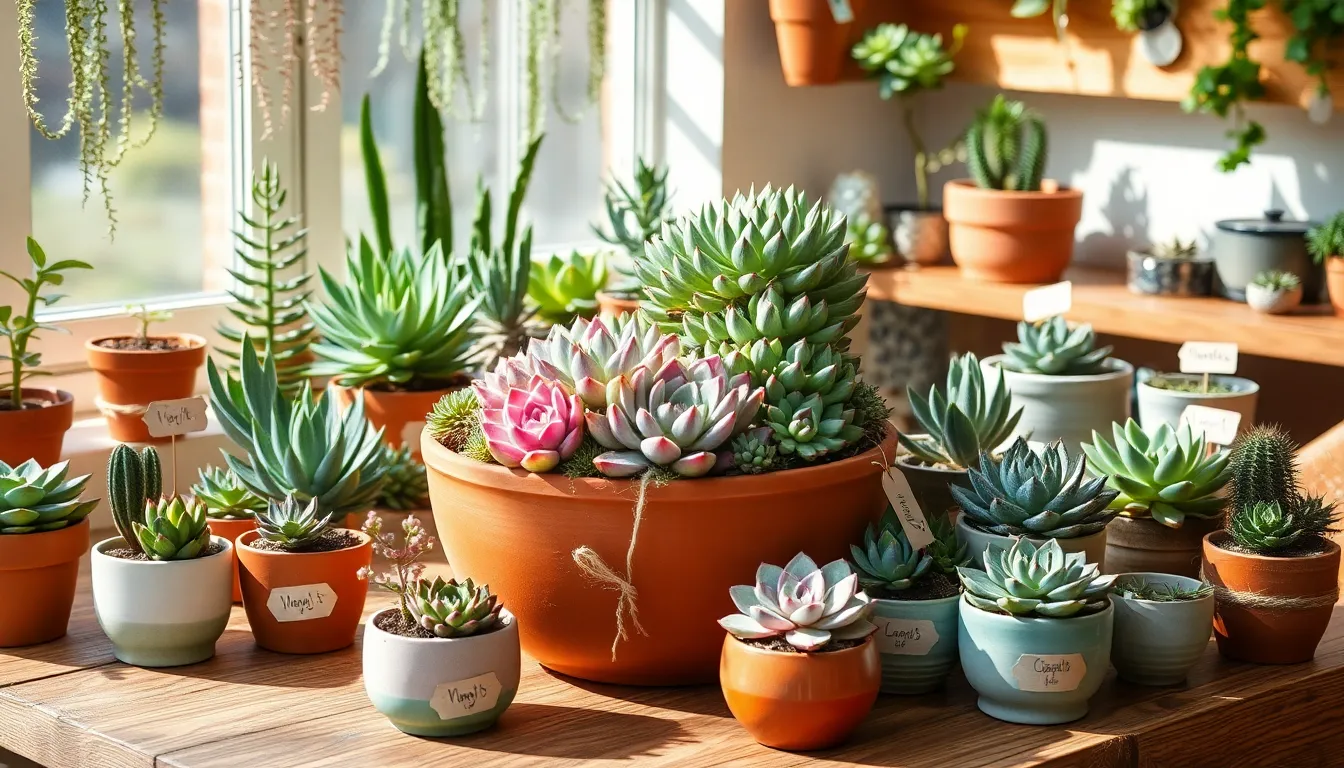In the bustling world of modern life, where time often slips through our fingers, the idea of nurturing a garden might seem daunting. Yet, the beauty of succulents lies in their resilience and ability to thrive with minimal care, making them perfect companions for both busy beginners and seasoned gardeners. These delightful plants, with their striking forms and diverse colors, offer more than just visual appeal—they provide an opportunity to connect with nature, even in the smallest of spaces.
Whether you’re just starting your gardening journey or are a veteran looking to expand your collection, succulents present an exciting, low-maintenance solution. In this article, we’ll explore nine exceptional succulents that can withstand a bit of neglect, allowing you to enjoy their charm without constant vigilance. You’ll discover which varieties are best suited for your lifestyle, along with essential tips for ensuring their success, transforming your home into a vibrant sanctuary with minimal effort.
Join us as we delve into the world of these hardy plants, uncovering secrets that make them both forgiving and captivating. With our guide, you’ll gain the confidence to incorporate these resilient beauties into your home, enhancing your space with their unique textures and colors. Get ready to embrace a new era of gardening, where even the busiest among us can find solace and satisfaction in the art of growing.
Understanding Succulent Resilience
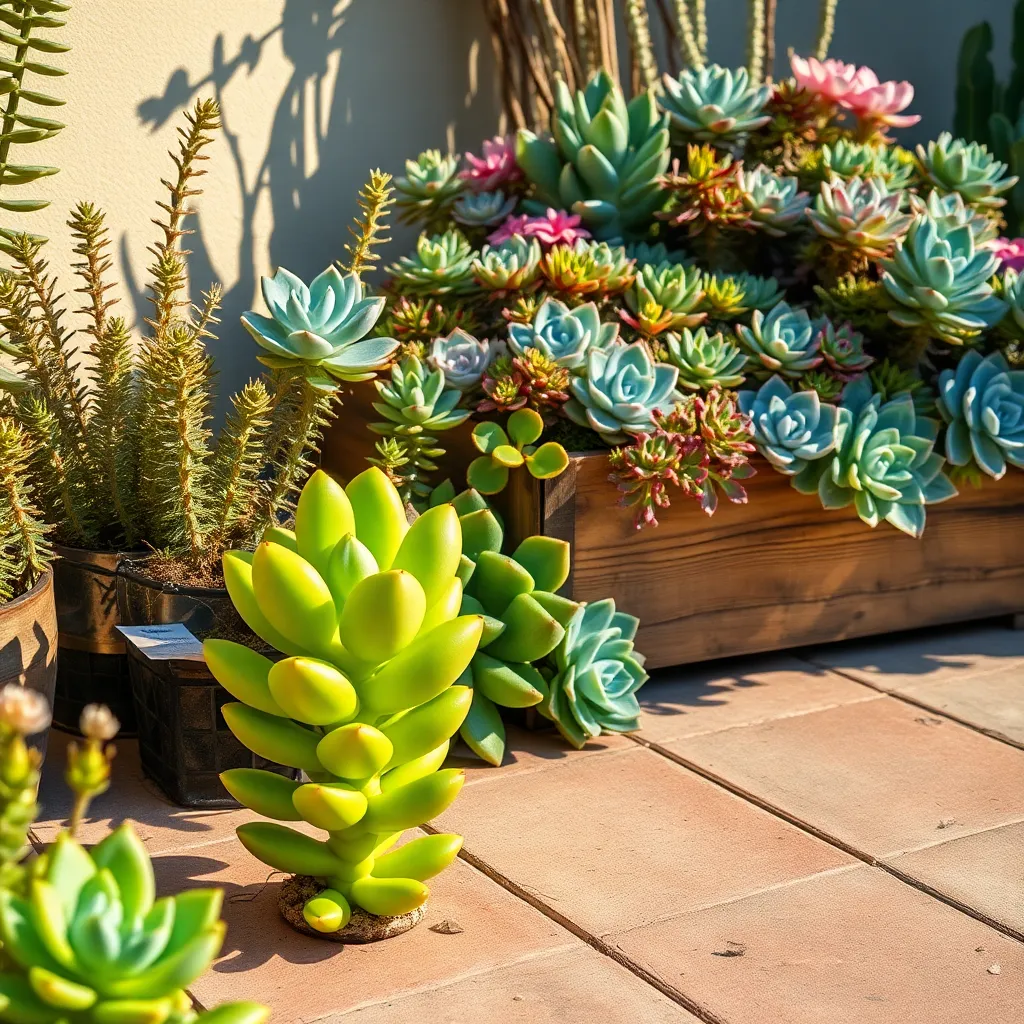
Succulents are renowned for their remarkable resilience, which makes them ideal for gardeners who may occasionally overlook care routines. These plants have evolved to thrive in arid conditions, storing water in their leaves, stems, and roots, which allows them to endure periods of neglect.
To maximize the resilience of your succulents, it’s crucial to use well-draining soil, such as a cactus mix or a blend of potting soil with sand or perlite. This prevents root rot, a common issue when succulents are overwatered or planted in dense soil.
Watering succulents once every two to three weeks is typically sufficient, though this frequency can vary depending on the climate and the season. Observing the soil moisture and ensuring it’s completely dry before watering is a practical approach to avoid overwatering.
For advanced gardeners, consider acclimating your succulents to full sun by gradually increasing their exposure over a week or two. This technique enhances their drought tolerance and promotes vibrant colors, but be cautious to prevent sunburn by avoiding sudden changes in light conditions.
Choosing Low-Maintenance Varieties
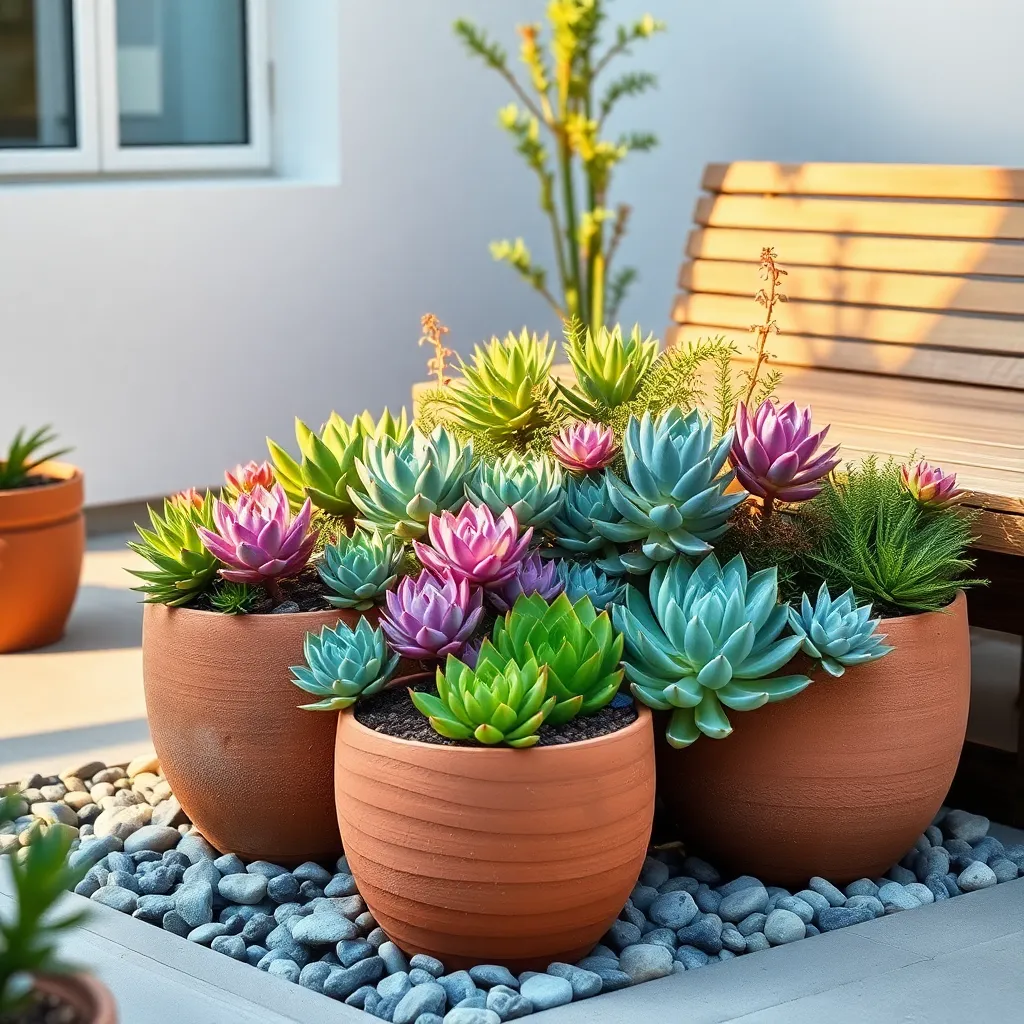
Choosing low-maintenance succulents is a strategic way to ensure your garden thrives with minimal effort. Focus on varieties known for their resilience, such as the hardy Haworthia, which can survive with less frequent watering and low light conditions.
When selecting succulents, consider their natural habitat to match your home environment. For instance, the Jade Plant thrives with bright, indirect sunlight and can tolerate long periods of dryness, making it ideal for indoor spaces.
For beginners, it’s essential to start with succulents that require minimal care and are forgiving of occasional neglect. Aloe Vera is a perfect choice, as it only needs watering every three weeks and can withstand a range of light conditions, from full sun to partial shade.
Advanced gardeners can experiment with creating the perfect soil mix to promote optimal growth. A blend of cactus soil with added perlite or pumice ensures excellent drainage, which is crucial for succulents to prevent root rot.
To maintain your succulents’ health, remember to adjust their care routine according to seasonal changes. During winter, reduce watering frequency to once a month, as succulents enter a dormant phase and require less moisture.
Aloe Vera: The Carefree Healer
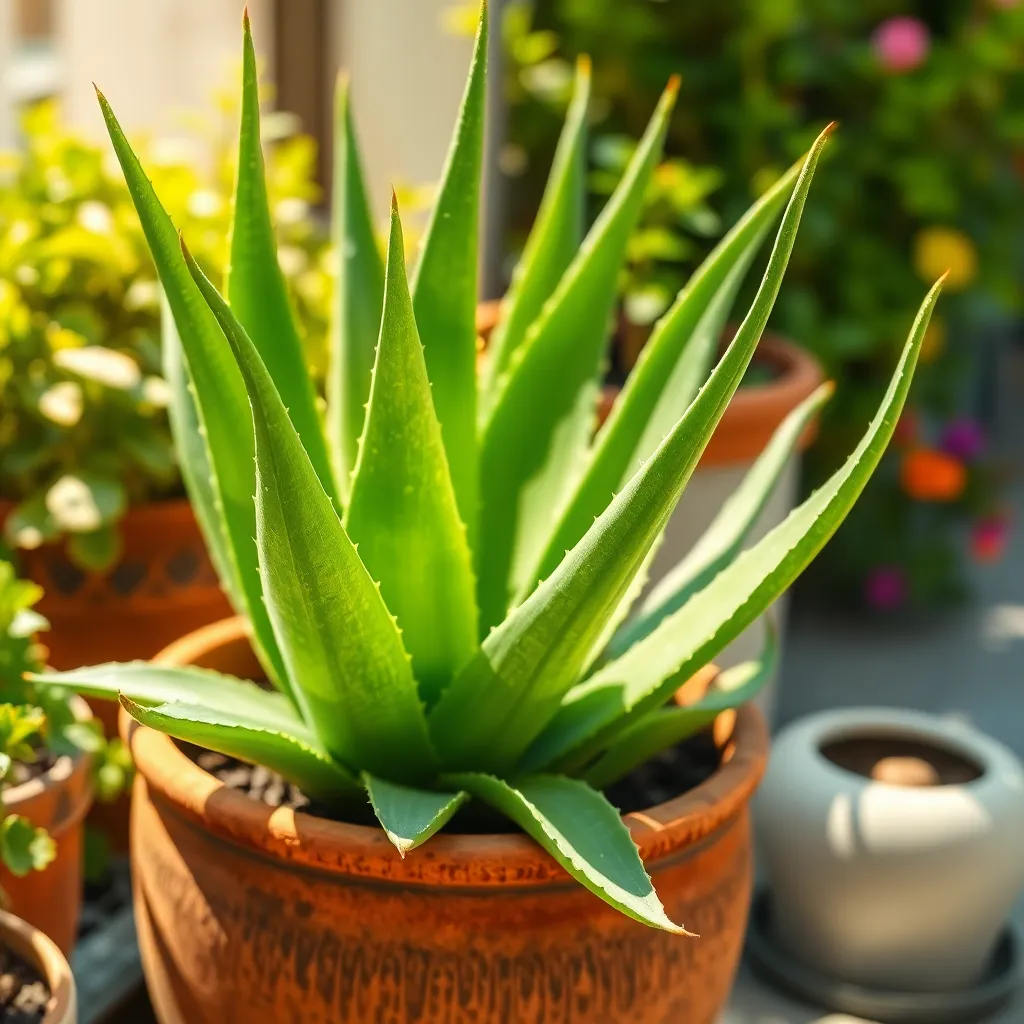
Aloe vera, often dubbed the “carefree healer,” is a succulent that thrives even when neglected. Known for its medicinal properties, this plant is perfect for beginners due to its low-maintenance nature.
To successfully grow aloe vera, place it in a bright spot with indirect sunlight, which mimics its natural habitat. Direct sun can scorch the leaves, so ensure it gets some shade during the hottest part of the day.
Watering is minimal, as aloe vera prefers dry conditions. Allow the soil to completely dry out between waterings, typically every three weeks, to prevent root rot.
For optimal growth, plant your aloe vera in a well-draining soil mix, such as a cactus or succulent blend. Advanced gardeners can enhance drainage by adding extra perlite or coarse sand to the mix.
Jade Plant: Easy-Going Beauty
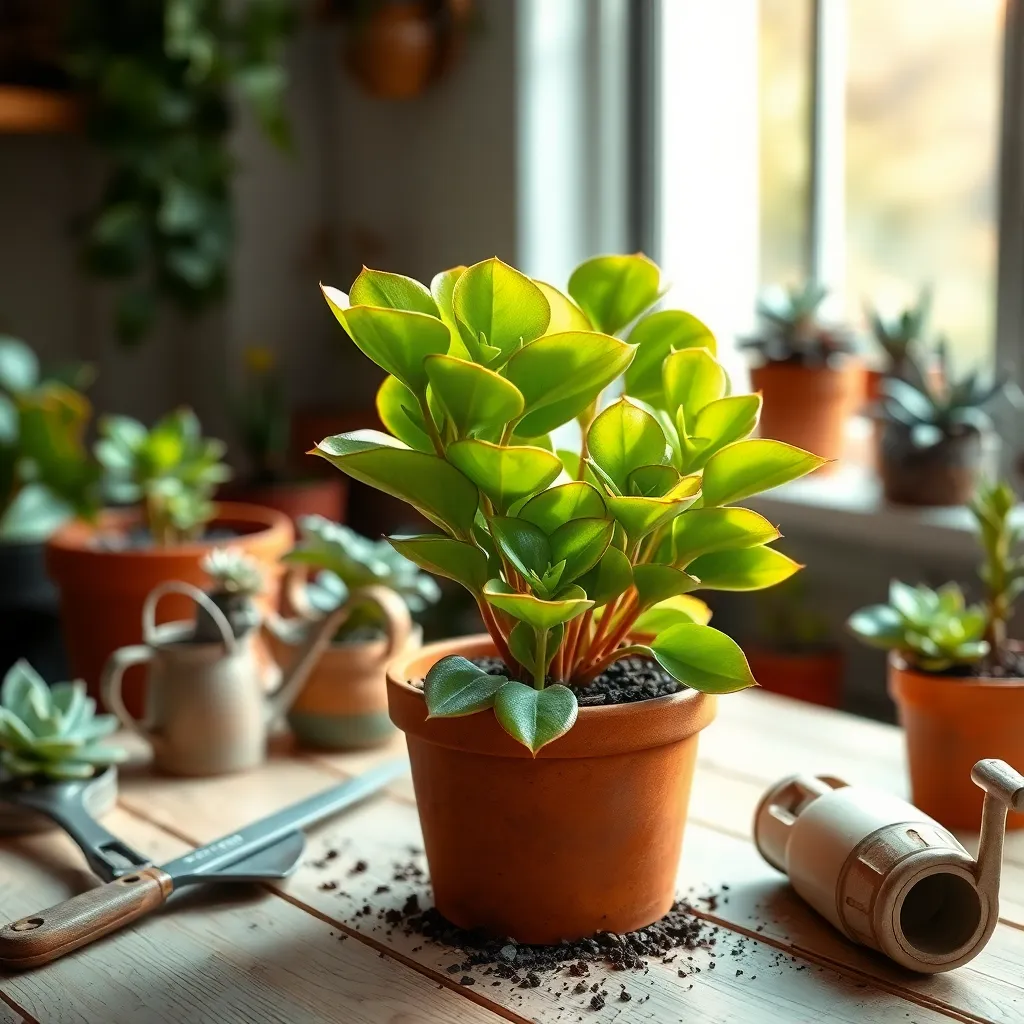
The jade plant, also known as Crassula ovata, is a popular succulent thanks to its hardy nature and appealing aesthetic. This easy-going beauty thrives with minimal attention, making it perfect for both beginners and seasoned gardeners.
Place your jade plant in a location where it receives bright, indirect sunlight for at least four hours a day. While it can tolerate direct sunlight, too much exposure can cause the leaves to scorch, so moderation is key.
Watering your jade plant is straightforward: allow the soil to dry out completely between waterings. During winter, reduce watering frequency as the plant enters dormancy, requiring even less moisture.
For optimal growth, use a well-draining soil mix, such as a cactus or succulent blend, to prevent root rot. If you’re repotting, choose a pot with drainage holes to further assist with excess water removal.
While jade plants are typically low-maintenance, occasional feeding with a diluted succulent fertilizer during spring and summer can enhance their growth. Pruning is also simple; trim any leggy growth to encourage a bushier appearance.
Zebra Haworthia: Striking Yet Simple

Among succulents that thrive on minimal care, the Zebra Haworthia stands out with its unique appearance and resilience. Known for its striking, zebra-like stripes, this plant is both eye-catching and easy to maintain, making it a perfect choice for busy gardeners.
To ensure your Zebra Haworthia thrives, place it in a spot where it can receive bright, indirect sunlight. Direct sunlight can scorch its leaves, so a location near a window with filtered light is ideal.
When it comes to watering, less is more for this succulent. Allow the soil to dry out completely between waterings, typically watering once every two to three weeks depending on your climate and season.
For optimal growth, plant your Zebra Haworthia in a well-draining potting mix, such as one specifically formulated for cacti and succulents. This will help prevent root rot, a common issue when the plant sits in waterlogged soil.
- Advanced Tip: Rotate the plant occasionally to ensure even growth and prevent it from leaning toward the light.
- Soil Preference: A gritty mix with sand or perlite works well.
- Winter Care: Reduce watering during the colder months when the plant goes dormant.
With its forgiving nature and minimal care requirements, the Zebra Haworthia is an excellent addition to any indoor plant collection. Its adaptability makes it a great plant for beginners and a reliable choice for seasoned gardeners looking to expand their succulent repertoire.
Burro’s Tail: Tolerant Trailing Plant
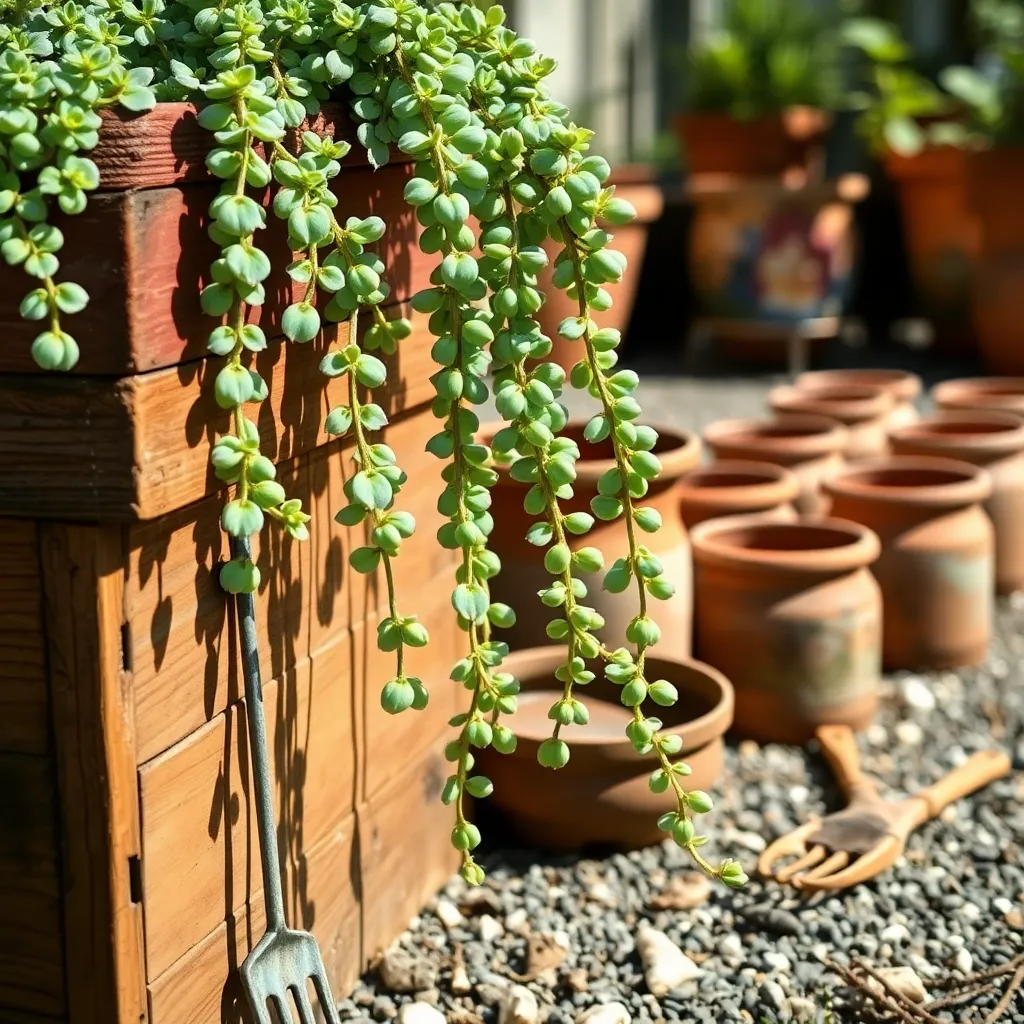
Burro’s Tail, also known as Sedum morganianum, is a delightful succulent that’s perfect for hanging baskets or trailing over the edges of pots. Its lush, cascading stems adorned with plump, green leaves make it a visually stunning choice for any indoor or outdoor space.
To ensure your Burro’s Tail thrives, place it in a location where it receives bright, indirect sunlight. Too much direct sunlight can cause the leaves to scorch, so an east or west-facing window is ideal for indoor growth.
When it comes to watering, Burro’s Tail prefers a “less is more” approach. Allow the soil to dry out completely between waterings, and use a well-draining cactus or succulent mix to prevent root rot.
For those looking to propagate this forgiving plant, simply snip off a few stems and let them dry for a day or two before planting in soil. With patience, new roots will form, and you’ll have a new plant to enjoy or share with friends.
Snake Plant: Unyielding House Companion
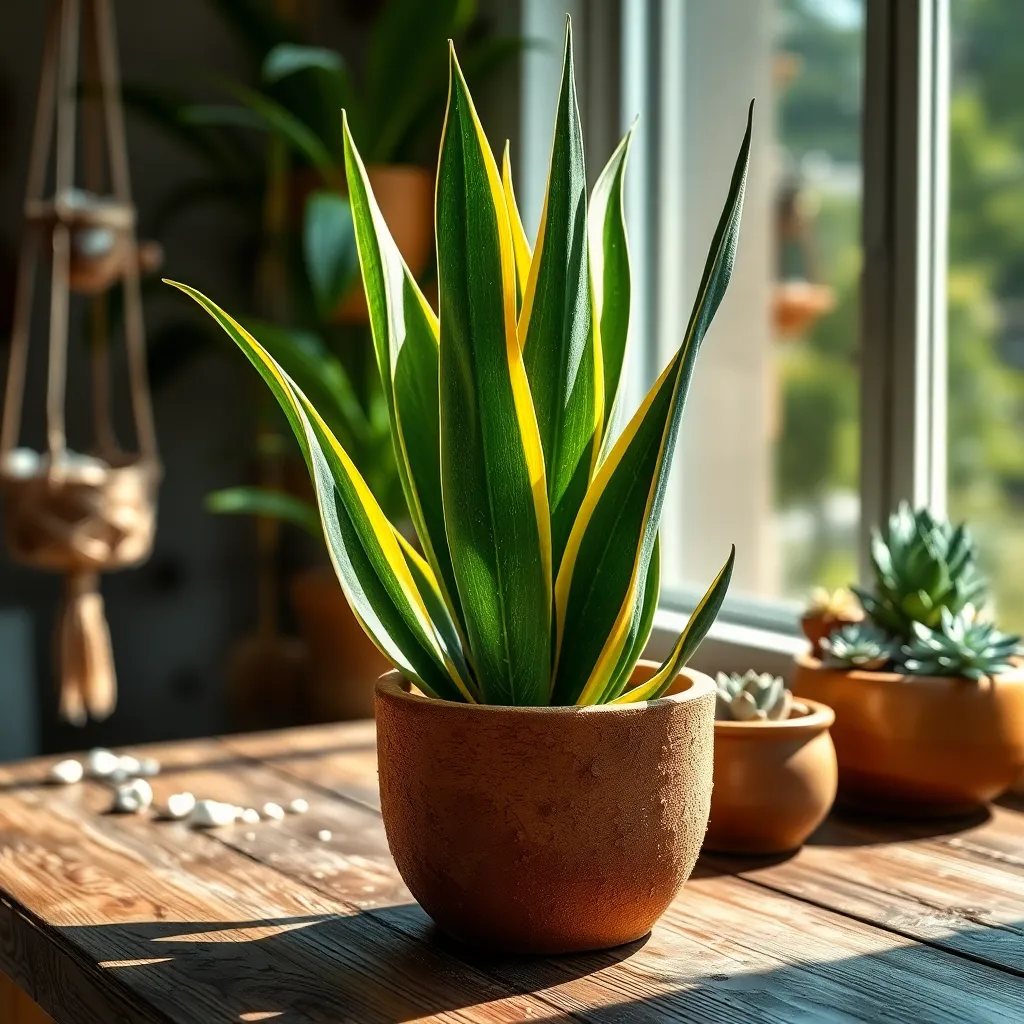
Often referred to as the “unkillable” plant, the snake plant is an ideal choice for those who might forget to water their plants regularly. This hardy succulent thrives on neglect, requiring watering only every 2-6 weeks, depending on the season and humidity levels in your home.
To ensure optimal growth, place your snake plant in indirect sunlight, although it can adapt to low-light conditions if necessary. For soil, use a well-draining cactus or succulent mix, as snake plants prefer their roots to dry out between waterings to prevent rot.
While the snake plant is forgiving, it does appreciate occasional care to remain lush and vibrant. Clean the leaves with a damp cloth periodically to remove dust and allow the plant to breathe better, enhancing its natural air-purifying qualities.
For those looking to propagate, simply cut a healthy leaf, let it callous for a day, and then plant it in moist soil. This simple technique can expand your snake plant collection with minimal effort, making it a rewarding experience for both novice and seasoned gardeners.
Paddle Plant: Minimal Effort Required
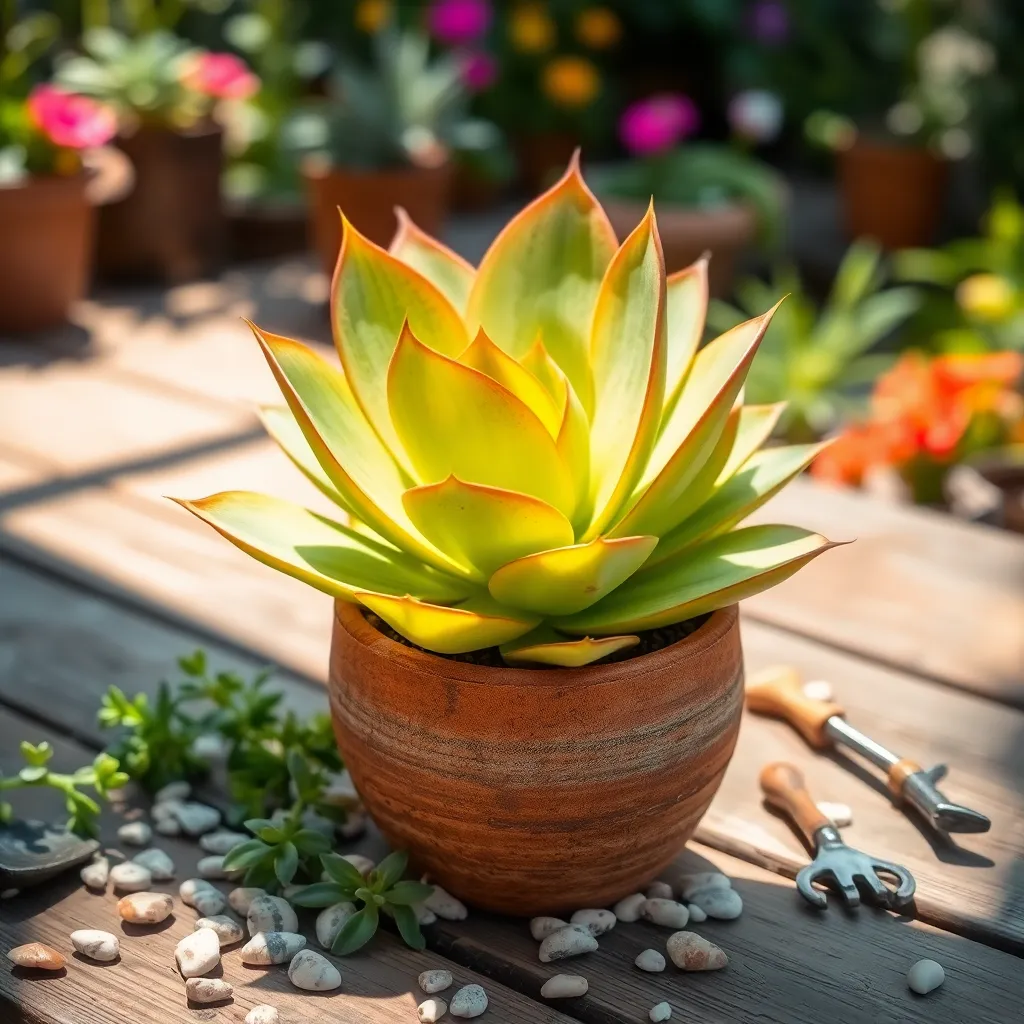
The Paddle Plant, known scientifically as *Kalanchoe thyrsiflora*, is perfect for those who prefer a low-maintenance greenery addition. This succulent thrives on neglect, needing only minimal attention to flourish.
Ensure your Paddle Plant enjoys plenty of bright, indirect sunlight to maintain its vibrant colors. If you’re placing it outdoors, a spot with some afternoon shade will help protect it from scorching.
Watering this plant is as simple as letting the soil dry out completely between waterings. Overwatering is a common mistake, so it’s best to err on the side of dryness to prevent root rot.
For those looking to give their Paddle Plant an extra boost, use a well-draining cactus or succulent potting mix. This ensures proper drainage and aeration, crucial for keeping your plant healthy and happy.
Advanced gardeners can propagate Paddle Plants effortlessly by leaf cuttings. Simply allow the cut edge to callous before placing it on moist, well-draining soil, and watch new growth emerge.
Caring for Neglect-Tolerant Succulents
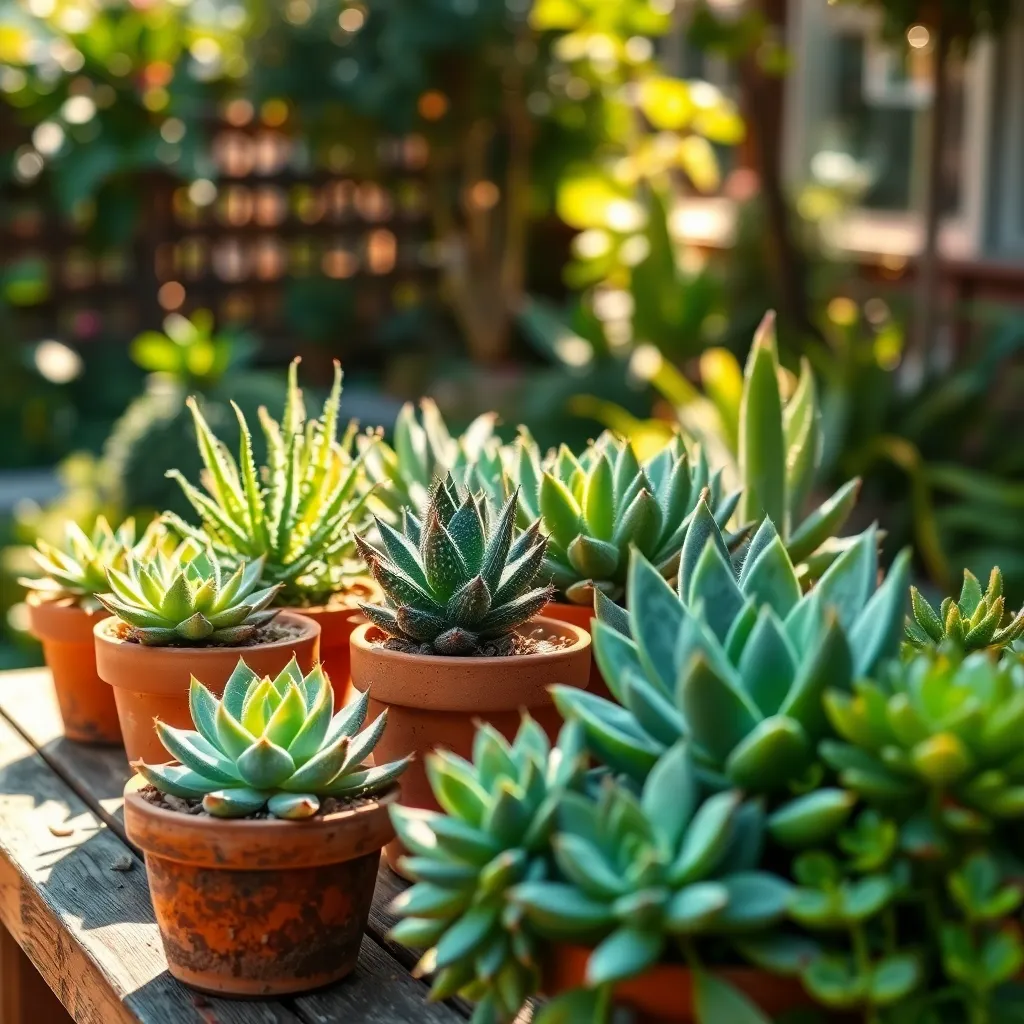
Succulents are renowned for their ability to thrive with minimal care, making them perfect for neglect-tolerant gardening. To ensure your succulents flourish, it’s essential to start with the right potting mix. Use a well-draining soil blend specifically designed for succulents and cacti, which helps prevent root rot.
Watering is a crucial aspect of succulent care, but it should be done sparingly. These plants store water in their leaves, so they only need to be watered every two to three weeks, depending on the climate. A good rule of thumb is to let the soil dry out completely between waterings.
Lighting is another critical factor for healthy succulents. Most succulents prefer bright, indirect sunlight, but be cautious of too much direct sun, which can scorch their leaves. An east or west-facing window is often ideal for providing the right light balance.
For gardeners looking to experiment further, try propagating succulents to expand your collection. Simply take a leaf or stem cutting and allow it to dry for a few days before placing it on top of moist soil. This technique is a rewarding way to grow new plants and share with friends.
Conclusion: Growing Success with These Plants
In our exploration of ‘9 Succulents That Survive Neglect,’ we delved into key relationship concepts like resilience, adaptability, patience, understanding, communication, trust, time management, emotional support, and self-care. Each concept mirrors the hardiness of succulents, demonstrating that even relationships can thrive with minimal care when built on strong foundations. Now that you’ve gained these insights, take a moment to assess which area in your relationship might benefit from a little extra attention. Start by choosing one concept and have an open conversation with your partner about how you can integrate it into your daily interactions.
To ensure these valuable insights are always within reach, bookmark this article. It serves as a handy guide to revisit whenever you need a gentle reminder that even relationships, like the hardiest plants, can flourish with the right approach.
Looking ahead, remember that success in relationships is a journey, not a destination. With consistent nurturing and the right mindset, your bond can grow stronger and more resilient over time. Embrace these concepts and watch your relationship bloom, even in the toughest of times.

